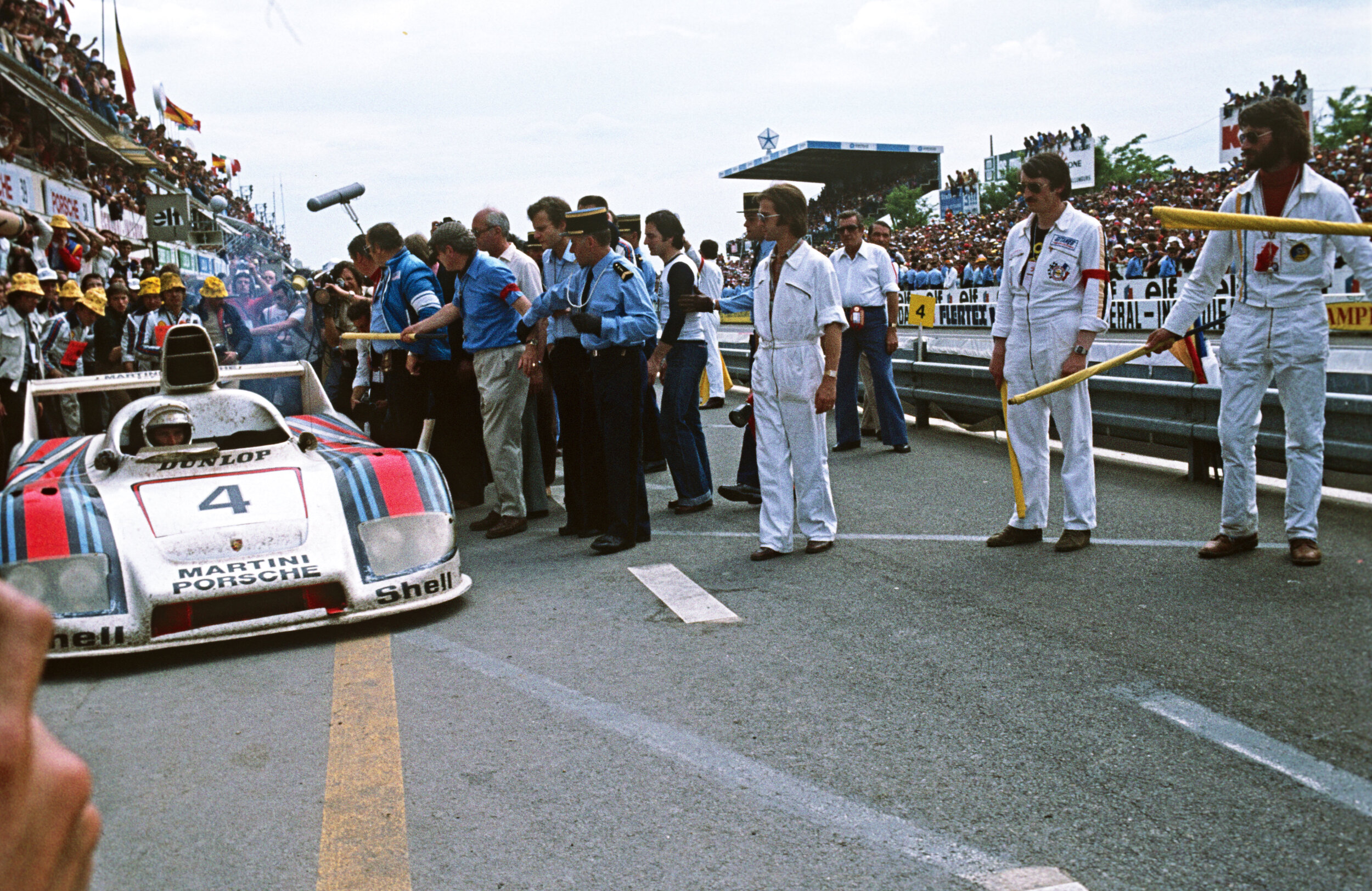The Barth’s brave breakaway
Born in Saxony in 1917, Edgar Barth grew up nearby the DKW motorcycle factory in Zschopau. By the time Edgar reached the age of eleven, DKW became the world’s largest motorcycle manufacturer. Therefore, the lure of speed was impossible to ignore in the surroundings of bike mad Saxony.
Enticed by 2 wheeled competition, Edgar Barth began racing at 16 and swiftly graduated to the rank of DKW factory rider. Alongside his motorcycling exploits, Barth also dabbled racing cars.
Sadly, Edgar Barth’s career would be politically hindered for the next two decades. Having survived the nightmare of World War Two, Edgar Barth’s route back to the track would be arduous and frustrating.
In the aftermath of the war, conditions were bleak for Edgar Barth and his fellow East Germans under Soviet control. Extravagances like motor racing seemed a distant ambition. Nevertheless, Barth found a way back to the saddle and competed locally, aboard a British Norton.
Barth’s performances caught the state racing team’s attention, and he duly joined as a driver for the ‘Rennkollektiv’. Simply translated as a group of workers going racing, the Rennkollektiv competed mostly within the Eastern zone using EMW machines. Eisenach motor works (EMW) had been part of BMW prior to the war but was now the state’s own entity.
Barth and his Rennkollektiv comrades initially operated from Johannisthal airfield. Today, nearby Berlin Tempelhof airfield hosts the fledgling Formula e series German round. Keen to promote their technical skills and communist ideology, the East German government relocated the Rennkollektiv to the Eisenach EMW factory and formed a works team. Most of the EMW Rennkollektiv’s racing activities were limited to the Eastern zone, but occasionally the team would be permitted to travel to West Germany and take on foreign rivals.
Edgar Barth enjoyed plentiful success in the East for the EMW Rennkollektiv, but his driving talent deserved much more. When permitted to compete in the West against international competition, the Saxony native shone despite his ageing EMW machinery. The Nurburgring may be known as ‘The Green Hell’, but the twenty-two-kilometre circuit provided a paradise for Edgar Barth to showcase his exceptional talent. Barth’s Nurburgring heroics soon grabbed the attention of Porsche’s PR and racing manager, Huschke von Hannstein.
By 1956, matters in East Germany deteriorated further and citizens escaped to the West. An estimated 400,000 East Germans fled in 1953 alone. Coincidentally, the EMW Rennkollektiv’s days were also numbered as resources dried up. Edgar Barth saw the writing on the wall and knew his racing could be thwarted by politics once again.
With EMW’s racing department now disbanded, Huschke von Hannstein invited Barth to drive with Porsche at the Nurburgring 1000km in May 1957. Surprisingly, Barth received permission from the East German authorities to travel to the West and compete. He never returned.
Driving a Porsche 550 Spyder with Umberto Maglioli, Barth rewarded von Hannstein’s faith with a class win. On the podium, Nurburgring organisers played the United German anthem, much to the East German authorities’ displeasure. Barth knew he couldn’t return to East Germany, but his wife and young son, Jurgen, were stranded at home in Karl-Marx-Stadt (now know as Chemnitz).
Whenever Edgar Barth travelled to the West, his family back home had their passports confiscated. Paranoia was rife amongst the GDR government and the state was desperately preventing citizens from fleeing the country. Eventually, this culminated in the overnight construction of the Berlin Wall in 1961.
Six months passed before Edgar’s wife and son Jurgen could escape for the West. On Totensonntag in November 1957, Edgar prepared to win the Caracas 1000km in Venezuela. Meanwhile, Jurgen and Mrs Barth began their risky journey to the border.
Gathering all the belongings they could carry, the Barths slipped out the back door and left the lights on. Trudging through forests and jumping between multiple cars, the Barths eventually made it to East Berlin undetected. Considering that one in every sixty-three GDR citizens were a government informant, the Barth’s accomplices had to be trustworthy.
With Berlin in a rare state of quiet to mourn Germany’s dead on Totensonntag, the Barths boarded the S bahn train from East to West Berlin. Evading an East German police spot check, the Barths were safely into the West. Once Edgar returned from his Latin American adventure, the Barth family settled in Kornwestheim, nearby the Porsche works.
Now free from the oppressive GDR establishment, Edgar Barth travelled the world proudly representing Porsche. Barth drove Porsche’s sophisticated Spyders in glamorous events at Le Mans, the Targa Florio, the Tourist Trophy at Goodwood and many more.
Two years after escaping East Germany, Edgar Barth delivered Porsche’s finest accomplishment to date. Sharing driving duties with Wolfgang Seidel, Barth overcame an armada of powerful opposition from Ferrari to win the 1959 Targa Florio. Barth and Seidel’s triumph in the 718 RSK Spyder was Porsche’s second at the Sicilian classic, which was now a World Championship event.
While his Father was rewarded for on track bravery, young Jurgen Barth’s courageous escape from East Germany laid a path to a fruitful career with Porsche. In 1963, Jurgen Barth enrolled as an apprentice at the Porsche works and completed his studies in engineering and business.
Tragically, Edgar Barth didn’t get to see his son graduate from his Porsche apprenticeship. At the age of 48, Edgar Barth passed away from cancer. Thus, cutting short a brief yet extraordinary career with the Porsche works. Following Edgar’s death, Huschke von Hannstein took Jurgen under his wing and revealed the high-octane world of Porsche motorsport to his apprentice.
Jurgen Barth’s achievements with Porsche cannot be given justice on these pages. Winning the 1977 24 hours of Le Mans, ranks highest of a glittering career on track. Establishing Weissach’s customer racing department and championing the 911 GT1 homologation special, are two of many boasts attributed to a man who risked much to reach the solace of the Porsche family.






